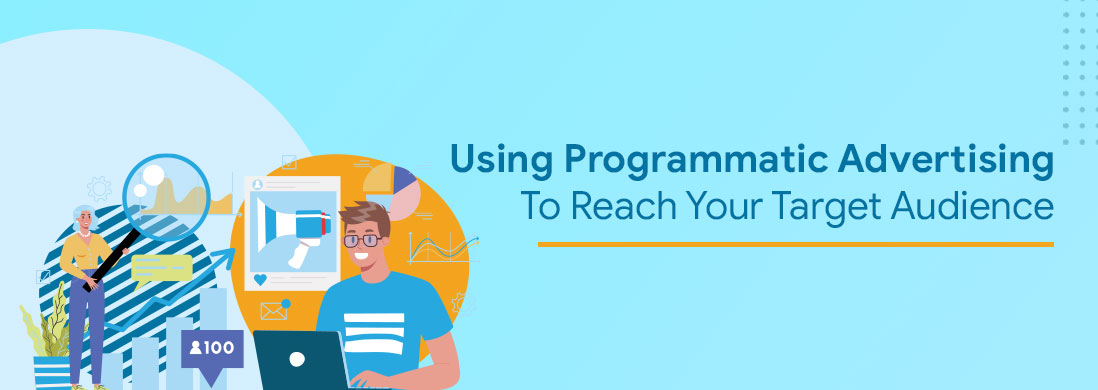Digital advertising space is purchased and sold automatically using programmatic advertising. Real-time ad inventory purchases are made using software and algorithms, and the best appropriate audience for a given ad campaign is determined using data and analytics.
Using real-time bidding (RTB) technology, programmatic advertising enables marketers to place bids on impressions as they become available. By providing advertisements to the appropriate individuals at the appropriate moment, this approach enables advertisers to quickly and precisely target the proper audience.
Programmatic advertising is used for advertising which includes display ads, video ads, mobile ads, and native ads. It offers several benefits, such as increased efficiency, cost-effectiveness, and scalability.
Advertisers can optimize their campaigns in real time by monitoring performance metrics and adjusting their bids accordingly.
Programmatic advertising is expected to continue to grow as advertisers look for more efficient ways to reach their target audience.
What is programmatic advertising?
Programmatic advertising is a strategy that relies on data to purchase, place, and optimize online ads automatically. This approach utilizes real-time bidding systems and algorithms to target specific audiences and deliver highly relevant ads on the right device at the right time.
By utilizing data on user behavior, demographics, and interests, programmatic advertising enables advertisers to effectively reach their target audience. Additionally, it enables more flexibility and control over ad targeting and placement, as well as real-time monitoring and analysis of campaign performance.
Some common examples of programmatic advertising include display ads, video ads, mobile ads, and native ads. Overall, programmatic advertising has become an increasingly popular method of digital advertising due to its efficiency, scalability, and ability to generate better ROI compared to traditional advertising methods.
How does programmatic advertising work?
Programmatic advertising is a method of buying and selling digital advertising inventory through automated processes using algorithms and software.
Here are the steps involved in the programmatic ads
Buyer Persona: Publishers and marketers gather information on their audiences, such as demographics, interests, and browsing patterns.
Ad Inventory: Publishers provide their website or mobile app ad inventory for programmatic advertising networks to purchase.
Auctions: Using a demand-side platform (DSP), advertisers place bids on available ad space; the highest bidder wins the auction.
Ad serving: The ad is served to the user based on their data and the targeting criteria set by the advertiser.
Real-time optimization: The programmatic system continuously optimizes the ad campaign in real time based on performance data, such as click-through rates, conversions, and engagement.
Display, video, native, and mobile ads are just a few of the ad formats that can be employed with programmatic advertising. It enables advertisers to efficiently, cost-effectively, and at scale reach their target consumers. Also, it offers publishers a quick and effective option to sell their ad inventory, increasing their profit.
How cost-effective is programmatic advertising?
Optimizing ad spends while reaching the target audience is possible for advertisers through programmatic advertising. The cost-effectiveness of this approach is influenced by various factors, including the advertiser’s goals, budget, and targeting criteria. Compared to traditional advertising methods, programmatic advertising has the potential to deliver better targeting, higher engagement rates, and lower costs per conversion.
Despite its benefits, programmatic advertising has some drawbacks, such as ad fraud, brand safety concerns, viewability issues, and ad-blocking. Advertisers should carefully monitor their campaigns and collaborate with trustworthy partners to ensure that they are achieving the best possible return on investment.
In conclusion, when utilized correctly and with appropriate tools and partners, programmatic advertising can be a financially beneficial option for advertisers.
What are the best ways to reach your audience through programmatic advertising?
Retargeting: A form of programmatic advertising known as retargeting focuses on visitors who have already interacted with your brand or been to your website. You can raise the likelihood that these users will make a purchase or take another desired action by retargeting them with relevant adverts.
Lookalike Audiences: Programmatic advertising enables you to generate audiences that are similar to your current clientele. the aforementioned, the aforementioned, and the aforementioned, the aforementioned, and the aforementioned.
Cross-Device Targeting: Programmatic advertising allows advertisers to focus on specific users who use tablets, smartphones, and desktop computers. By doing this, you can be sure that users will see your advertising regardless of the device they are using.
Real-Time Bidding: A crucial component of programmatic advertising, real-time bidding enables advertisers to make real-time offers on ad inventory. By doing this, you can maximize your reach and your targeting options while also getting the best pricing for your ad placement.
Programmatic advertising uses data to improve the performance and delivery of ads. Advertisers can increase the efficacy of their campaigns by using data analysis to examine audience behavior, ad placement, and other variables.
Brand Safety: By employing tools that track ad placement and make sure that ads are not shown on improper websites or next to bad material, programmatic advertising may help assure brand safety.
Closing Thoughts:
In conclusion, programmatic advertising is an efficient and effective method of reaching your target audience through data-driven and automated processes. By utilizing options like retargeting, lookalike audiences, cross-device targeting, real-time bidding, and brand safety measures, advertisers can optimize their campaigns and generate better ROI.
However, it is important to monitor campaigns and collaborate with trustworthy partners to ensure that programmatic advertising is a cost-effective option. Overall, programmatic advertising is expected to continue growing as advertisers seek more efficient ways to reach their target audience.


